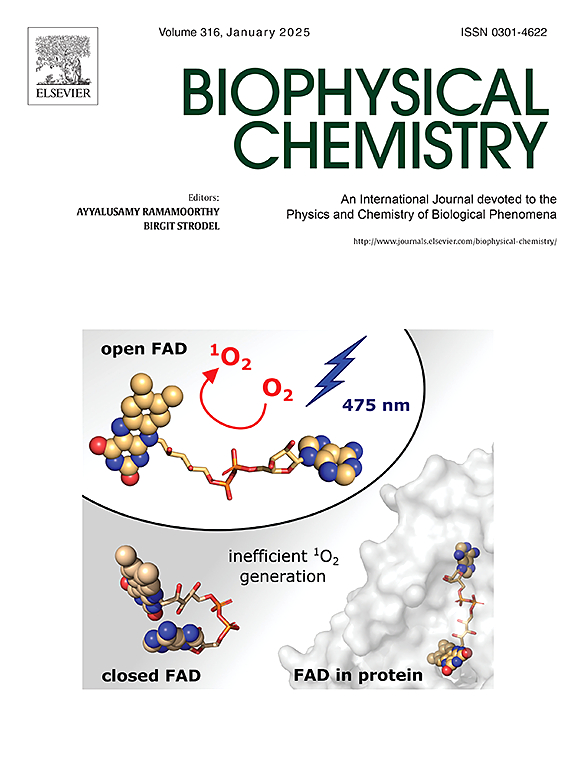Revealing the underlying mechanism of ZnO nanoparticles-induced modulation of structural features and thermodynamic stability of myoglobin
IF 2.2
3区 生物学
Q2 BIOCHEMISTRY & MOLECULAR BIOLOGY
引用次数: 0
Abstract
Characterization by various surface morphological and compositional analysis techniques showed that ZnO NPs have a cylindrical crystalline structure with a size of ≤50 nm. The analysis of ZnO NPs effects on UV–visible, CD, fluorescence, and 1H NMR spectra of horse myoglobin (h-MB) in aqueous and denaturant media at pH 7.4 revealed that ZnO NPs reinforce the urea impact by weakening the heme-globin interaction and protein structures in the denaturant medium. Analysis of ZnO NPs effects on urea- and heat-induced denaturation profiles of h-MB revealed that ZnO NPs reduce the local (heme-globin interaction) thermal stability of h-MB in an aqueous medium, but they decrease both local and structural thermodynamic stability in denaturant medium. Analysis of ZnO NPs effects on entropy-enthalpy plot, protein stability curve, and average fluorescence lifetime of h-MB revealed that the attractive enthalpic electrostatic interactions between the ZnO NPs and h-MB contribute to the decrease in thermodynamic stability of h-MB by ZnO NPs.

揭示纳米氧化锌诱导肌红蛋白结构特征和热力学稳定性调节的潜在机制
通过各种表面形貌和成分分析技术表征,ZnO纳米粒子具有尺寸≤50 nm的圆柱形晶体结构。在pH为7.4的水溶液和变性介质中,氧化锌NPs对马肌红蛋白(h-MB)的紫外可见、CD、荧光和1H NMR谱的影响分析表明,氧化锌NPs通过削弱变性介质中血红蛋白相互作用和蛋白质结构来增强尿素的影响。氧化锌NPs对h-MB的尿素和热致变性谱的影响分析表明,氧化锌NPs降低了h-MB在水介质中的局部热稳定性(血红蛋白相互作用),但降低了h-MB在变性介质中的局部和结构热力学稳定性。分析ZnO NPs对h-MB的熵焓图、蛋白质稳定性曲线和平均荧光寿命的影响表明,ZnO NPs与h-MB之间的吸引焓静电相互作用导致了ZnO NPs对h-MB的热力学稳定性降低。
本文章由计算机程序翻译,如有差异,请以英文原文为准。
求助全文
约1分钟内获得全文
求助全文
来源期刊

Biophysical chemistry
生物-生化与分子生物学
CiteScore
6.10
自引率
10.50%
发文量
121
审稿时长
20 days
期刊介绍:
Biophysical Chemistry publishes original work and reviews in the areas of chemistry and physics directly impacting biological phenomena. Quantitative analysis of the properties of biological macromolecules, biologically active molecules, macromolecular assemblies and cell components in terms of kinetics, thermodynamics, spatio-temporal organization, NMR and X-ray structural biology, as well as single-molecule detection represent a major focus of the journal. Theoretical and computational treatments of biomacromolecular systems, macromolecular interactions, regulatory control and systems biology are also of interest to the journal.
 求助内容:
求助内容: 应助结果提醒方式:
应助结果提醒方式:


